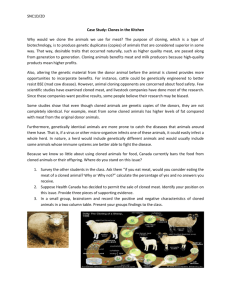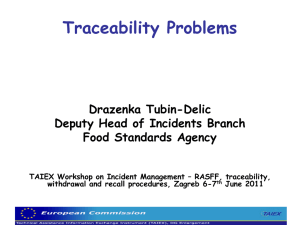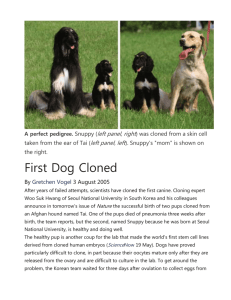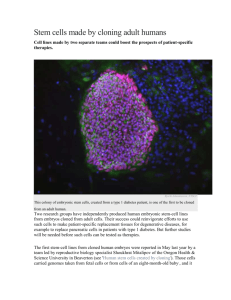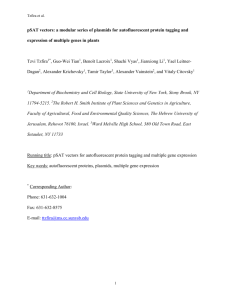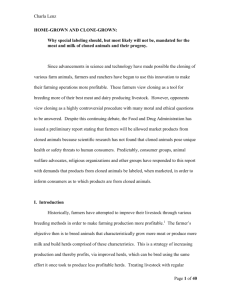GM Animals: Do The Ends Justify The Means?
advertisement
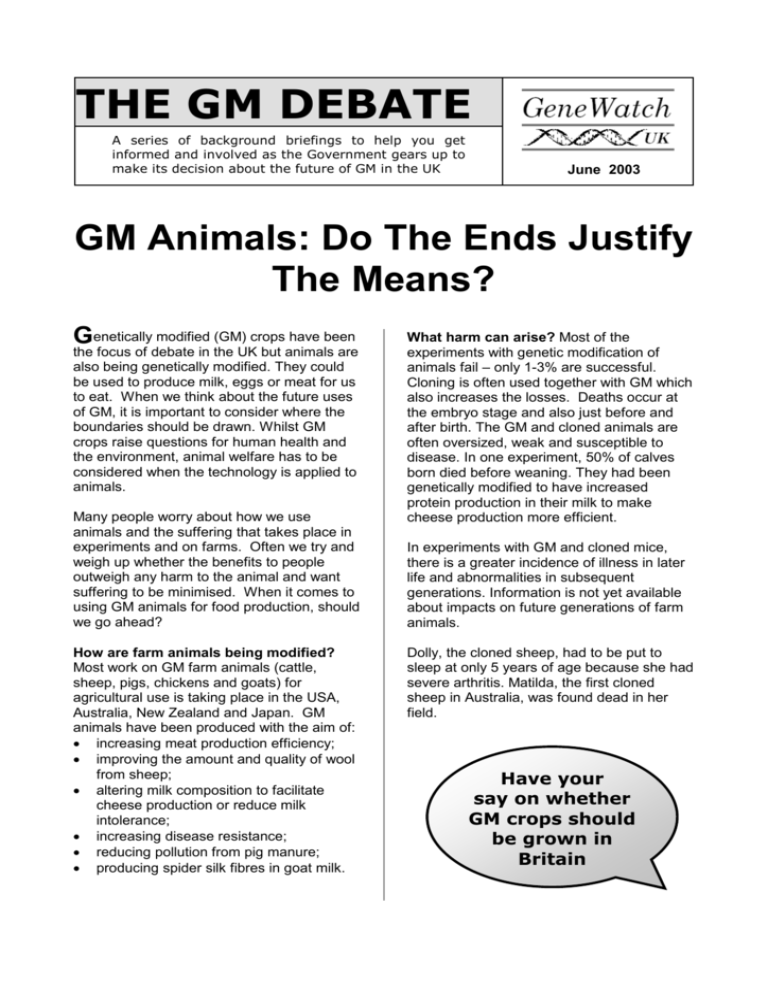
THE GM DEBATE A series of background briefings to help you get informed and involved as the Government gears up to make its decision about the future of GM in the UK June 2003 GM Animals: Do The Ends Justify The Means? Genetically modified (GM) crops have been the focus of debate in the UK but animals are also being genetically modified. They could be used to produce milk, eggs or meat for us to eat. When we think about the future uses of GM, it is important to consider where the boundaries should be drawn. Whilst GM crops raise questions for human health and the environment, animal welfare has to be considered when the technology is applied to animals. Many people worry about how we use animals and the suffering that takes place in experiments and on farms. Often we try and weigh up whether the benefits to people outweigh any harm to the animal and want suffering to be minimised. When it comes to using GM animals for food production, should we go ahead? How are farm animals being modified? Most work on GM farm animals (cattle, sheep, pigs, chickens and goats) for agricultural use is taking place in the USA, Australia, New Zealand and Japan. GM animals have been produced with the aim of: increasing meat production efficiency; improving the amount and quality of wool from sheep; altering milk composition to facilitate cheese production or reduce milk intolerance; increasing disease resistance; reducing pollution from pig manure; producing spider silk fibres in goat milk. What harm can arise? Most of the experiments with genetic modification of animals fail – only 1-3% are successful. Cloning is often used together with GM which also increases the losses. Deaths occur at the embryo stage and also just before and after birth. The GM and cloned animals are often oversized, weak and susceptible to disease. In one experiment, 50% of calves born died before weaning. They had been genetically modified to have increased protein production in their milk to make cheese production more efficient. In experiments with GM and cloned mice, there is a greater incidence of illness in later life and abnormalities in subsequent generations. Information is not yet available about impacts on future generations of farm animals. Dolly, the cloned sheep, had to be put to sleep at only 5 years of age because she had severe arthritis. Matilda, the first cloned sheep in Australia, was found dead in her field. Have your say on whether GM crops should be grown in Britain What are the possible benefits? The main benefits that might arise from the use of GM animals are economic. Meat, cheese and wool may be produced at lower cost. It is argued that because more people in countries like China are eating meat as they become more affluent, that such improvements in production efficiency would be needed to meet demand. It is also possible that if efforts to make animals resistant to disease were successful, suffering would be reduced. Costs of treatment and production losses may also be reduced giving an additional economic benefit. GM fish: GM fish are also being produced that grow more quickly. A Canadian company is seeking approval in the USA to sell GM salmon which would have been reared in fish farms. The main concern here is to do with the environment. If the GM salmon escape from their pens and survive at sea or in rivers, they could breed with wild salmon. Efforts are being made to make such fish sterile but it is not clear if this will be completely effective. GM fluorescent fish are also being produced for the pet market. Cats, dogs and horses: In the USA, cats have been genetically modified and cloned. One aim is to produce a cat which does not cause allergies so people who allergic to normal cats would be able to have a GM cat as a pet. Other people are trying to clone dogs and horses so that owners could have a ‘replacement’ of a loved pet or a copy of a valuable animal. It is unlikely that such GM pet animals could be produced in Britain because of the relatively strict legislation that exists compared to many other countries. Such applications would be considered ‘trivial’ or ‘cosmetic’ and experimentation not justified. Artificial breeding is not allowed under racing rules. GM animals in medicine: GM animals (mainly mice) are also used in medical experiments. Some GM farm animal being develop to produce drugs in their milk or for human organs. Debating Matters Should GM of animals be allowed? – are there some applications, such as the use of GM animals in medical research which are OK and others which are not? What is unacceptable and why? Does the potential for economic gain from GM animals in the long run, outweigh the suffering of experimental animals in the short term? – it is possible that the difficulties of producing GM animals may be overcome. Is the suffering of GM animals now just part of the price of progress? Would you eat products from GM animals? – these should be labelled under European regulations. If you chose not to eat them would this be because of animal welfare concerns or your own health? Should there be information on the use of GM animals? – although animal research is vetted by the Home Office, no details about what takes place are available to the public and there is no opportunity for comment. This is partly because of fears that scientists would be attacked by animal rights activists. Do you think more information should be available? Should GM pets be allowed? – if GM would allow people who love animals but are allergic to keep pets, is this a good enough reason? If you lost a favourite pet would you like to have a cloned copy? The cloned kitten produced in the USA was a different colour than the animal it was cloned from. GeneWatch UK, The Mill House, Manchester Road, Tideswell, Derbyshire, SK17 8LN Phone: 01298 871898 Fax: 01298 872531 Email: mail@genewatch.org Website and more on The GM Debate: www.genewatch.org Printed and published by GeneWatch UK, June 2003
